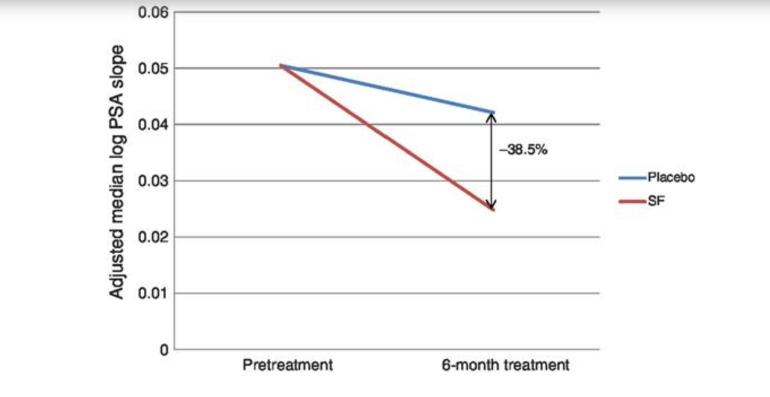I have posted an NIH study with similar findings and have noted that I have taken 20mg of stabilized Sulforaphane for 2 1/2 years now (study was 60mg for M6 or 6 months)...who knows if my dosing is sufficient, but the length of supplementation is far greater. Regardless, I keep taking the supplement and it appears there is solid science behind the claim that the stabilized form of Sulforaphane works against progression of PSA! Be alert that all but one brand of supplement sold is not 'stablized,' and are precursors of Sulforaphane (Glucoraphanin )...I believe that brocholy sprouts will also give you the stabilized version of Sulforaphane directly; it takes some labor to get them to grow, then blending to get them juiced for consumption. See this article.
mara-labs.com/blogs/journal...
The AACR studies primary end point was not met but that was a PSA slope reduction greater than what was achieved, which is by itself significant. Take a look and see if this should be part of your regime...the longer it takes PSA to double the better the outcomes for progression in all aspects. The study does show that the positive effects on reduction of PSA doubling disappears with the end of supplementation and that the placebo group's PSA surge at M6 was higher than the control.
Volume 8, Issue 8, 1 August 2015 (Current)
Because the phytochemical sulforaphane has been studied extensively as an anticancer agent, we performed a double-blinded, randomized, placebo-controlled multicenter trial with sulforaphane in 78 patients (mean age, 69 ± 6 years) with increasing PSA levels after radical prostatectomy. Treatment comprised daily oral administration of 60 mg of a stabilized free sulforaphane for 6 months (M0–M6) followed by 2 months without treatment (M6–M8).
Treatment comprised daily oral administration of 60 mg of a stabilized free sulforaphane for 6 months (M0–M6) followed by 2 months without treatment (M6–M8). The median log PSA slopes were consistently lower in sulforaphane-treated men. Mean changes in PSA levels between M6 and M0 were significantly lower in the sulforaphane group (+0.099 ± 0.341 ng/mL) than in placebo (+0.620 ± 1.417 ng/mL; P = 0.0433). PSA doubling time was 86% longer in the sulforaphane than in the placebo group (28.9 and 15.5 months, respectively). PSA increases >20% at M6 were significantly greater in the placebo group (71.8%) than in the sulforaphane group (44.4%); P = 0.0163. Compliance and tolerance were very good. Sulforaphane effects were prominent after 3 months of intervention (M3–M6). After treatment, PSA slopes from M6 to M8 remained the same in the 2 arms. Daily administration of free sulforaphane shows promise in managing biochemical recurrences in prostate cancer after radical prostatectomy. Cancer Prev Res; 8(8); 712–9. ©2015 AACR.tje s

